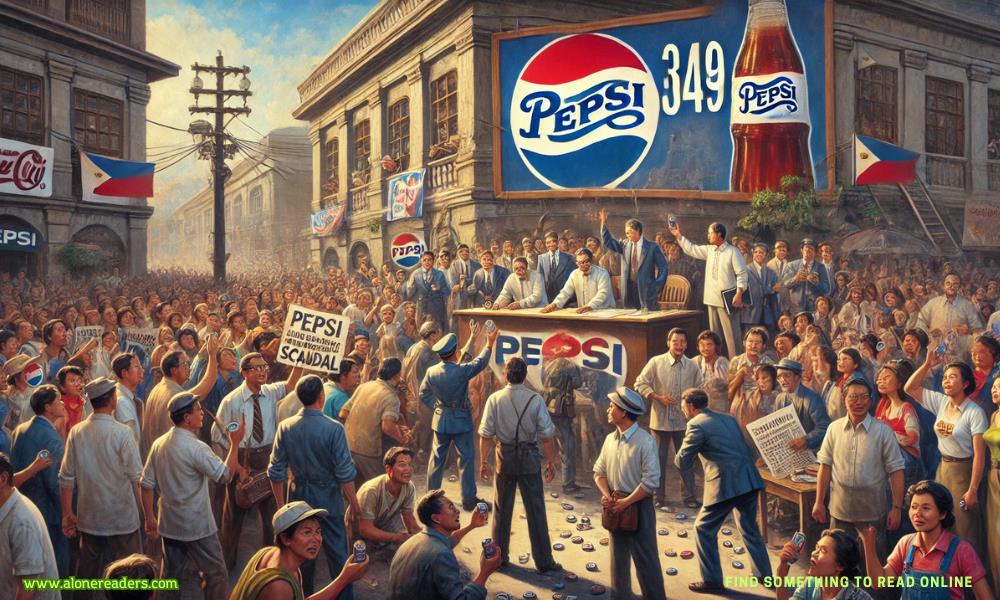
In 1993, PepsiCo launched a promotional campaign in the Philippines that would go down as one of the biggest marketing disasters in history. The campaign, known as “Number Fever,” promised Filipino consumers a chance to win one million pesos (roughly $40,000 at the time) if they found the winning number 349 under their bottle caps. However, a grave mistake by Pepsi’s production team resulted in 800,000 bottle caps being printed with the winning number instead of just one, leading to mass outrage, protests, and even deadly violence.
The Philippines was an ideal market for Pepsi’s promotional campaign. At the time, the country had a struggling economy, and an offer of one million pesos was life-changing money for many Filipinos. The campaign was designed to boost Pepsi’s sales and help it compete with Coca-Cola, which dominated the soft drink market in the country. The mechanics of the contest were simple: customers had to buy Pepsi products, check under the bottle caps for a printed number, and compare it with the winning number announced by Pepsi. If their cap had the winning number, they could claim their prize.
Initially, the campaign was a massive success. Sales of Pepsi skyrocketed as Filipinos eagerly bought more bottles in the hopes of winning the grand prize. The contest created a frenzy, and Pepsi’s market share saw a significant boost. However, the excitement turned into chaos when the winning number for May 25, 1993, was announced as 349. Instead of just one or a few winning caps, there were 800,000 of them in circulation due to a printing error.
Filipinos who found the winning number on their caps rushed to claim their million-peso prize, but Pepsi was unable to honor the mistake. The company quickly realized that paying out all winners would cost an astronomical $32 billion—far beyond what Pepsi could afford. In an attempt to control the damage, Pepsi initially refused to pay the winners, stating that caps with security codes did not match those of the official winning caps. This explanation did little to calm the angry public, as many believed they had rightfully won under the contest rules.
As word spread, thousands of disappointed and furious Filipinos took to the streets, demanding their prizes. Protests erupted across the country, with some escalating into violent riots. People gathered outside Pepsi offices, throwing rocks and Molotov cocktails, and burning Pepsi delivery trucks. The outrage was so intense that several Pepsi executives in the Philippines received death threats. The situation worsened when it was reported that at least five people had died in violent incidents linked to the protests.
In response to the crisis, Pepsi offered affected customers a small consolation prize of 500 pesos (about $18 at the time), but this did little to appease the angry public. Many refused the offer and instead took legal action against the company. Thousands of lawsuits were filed against Pepsi, with some consumers forming groups to fight the company in court. The legal battle dragged on for years, with many cases eventually being dismissed, but the scandal had already inflicted severe damage on Pepsi’s reputation in the Philippines.
Despite Pepsi’s efforts to recover from the crisis, the company struggled to regain public trust. The backlash forced Pepsi to rethink its marketing strategies, and the “Number Fever” disaster became a cautionary tale for future promotional campaigns. The debacle remains one of the most infamous marketing blunders in history, serving as a reminder of how a simple mistake in execution can lead to catastrophic consequences.
Even decades later, the Pepsi 349 scandal is remembered in the Philippines as a moment of corporate betrayal. The event left a lasting impact on Filipino consumers, many of whom never fully forgave the company for its mistake. While Pepsi continues to operate in the country, the “Number Fever” campaign serves as a lesson on the importance of accuracy, responsibility, and corporate accountability in marketing promotions.